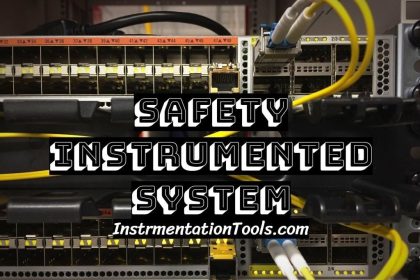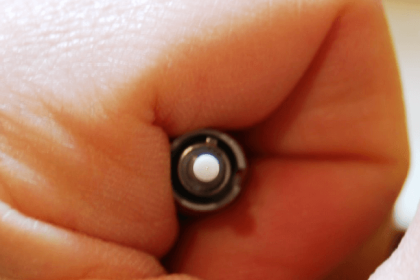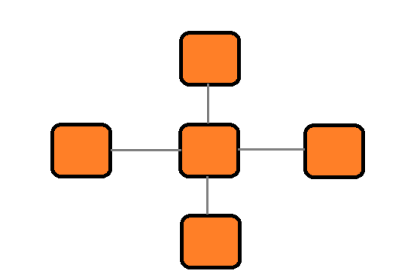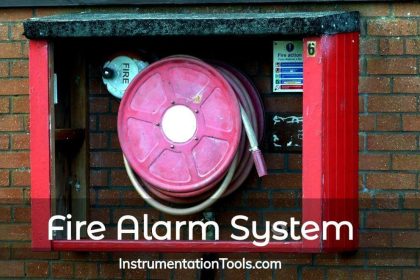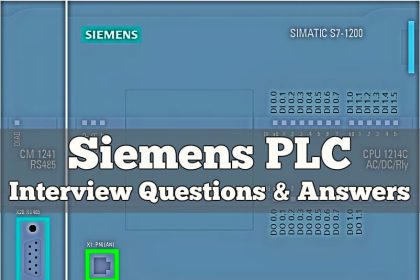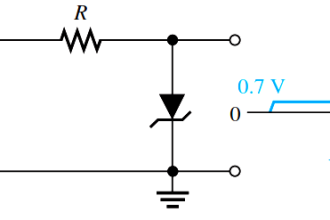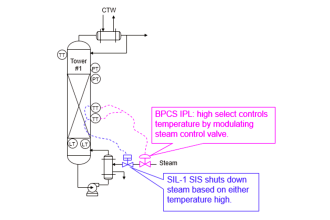Read the HART communication interview questions and answers for your preparation.
HART Communication Interview Questions & Answers
Highway Addressable Remote Transducer Protocol
What is HART?
The HART Communication Protocol (HART = Highway Addressable Remote Transducer) defines a bi-directional field communication protocol standard for instrument, control and automation systems.
Actually, it’s not just a standard, but the global standard for sending and receiving digital information across analog wires between smart devices and host systems.
A host can be any software application from technician’s hand-held device or laptop to a plant’s process control, asset management, safety or other system using any control platform.
Why use HART Technology?
There are several reasons for using HART Communication to enhance the data flow between hosts and field devices. These include device (re)configuration, diagnosing and troubleshooting instruments, reading values of additional measurements provided by the device, and much more.
It can provide many benefits, including playing a major role in improving plant operations, increasing asset availability, reducing maintenance costs and aiding in regulatory compliance.
In all these roles, HART technology has proven to be easy to use and very reliable.
How does HART Communication work?
The HART Protocol provides two simultaneous communication channels on the same wire: 4-20mA “current loop” analog and a HART digital signal.
While the analog signal continues to provide primary values to and from field instruments, the digital signal provides additional device information.
This is a very robust method with roots in the Bell 202 Frequency Shift Keying (FSK) standard, which originally superimposed a digital communication signal “on top of” the 4-20mA current loop to bring Caller ID technology to the field of telephony.
What is a Device Description?
Key to the HART Protocol’s ability to “get data out of the field device” is a data file called a Device Description (DD). This describes the features and functions of a device, such as the form and content of menus and graphic displays to be presented in host computers or handheld devices.
The DD is written in conformance with a Device Description Language in the protocol. The HART Communication Foundation manages a library of Manufacturer Device Descriptions, and provides regular updates to which any Foundation member can subscribe.
DD’s are available for download at the HART Communication Foundation website. The DD is not required for communication with HART-enabled devices. It is an optional enabling element of HART technology that most device and host suppliers support in order to offer HART Users the added value of multi-vendor interoperability
How does a HART Assist commissioning and configuration?
HART technology has been shown to significantly reduce the time required to fully commission a network (loop). For example. devices can be more quickly verified because the device specific and application information are loaded into instruments which can quickly be verified by the host control system.
Commissioning is further streamlined by connecting a PC configurator to each HART communication loop online either through the control system or a multiplexing I/O system.
This eliminates the need to move the configuration device from one termination point to the next while commissioning devices on the network.
Leading PC configurator applications also include a loop-test feature which ensures proper connections, and as-installed record-keeping features for long-term documentation and maintenance.
How to HART Communication data?
There are many ways to integrate HART data and leverage the intelligence in your smart field devices. Point-to-Point Integration is the most common method, enabling you to interrogate a device using a remote host by connecting anywhere on the current loop.
The next step is HART-to-Analog Integration, which replaces analog control components with HART protocol signal extractors to convert real-time instrument data 4-20 mA signals for input into an existing analog control system. Next, HART -plus – Analog Integration employs HART technology multiplexers to replace existing I/O termination panels.
The analog signal continues on to the control system, while HART communication data is sent to a device/asset management system to provide continuous diagnostics.
Finally, Full HART Integration upgrades the field or remote I/O system for full, bidirectional communication between field instrumentation and the control system.
The result is fully automated, real-time detection of problems with devices or connections for more rapid corrective action.
What is the main difference between DTM and DD configuration methods?
The FDT standard supports both DD and DTM configuration methods.
The DD (Device Description) Language allows a device to be described using a text like language. This is then compiled into a DD file that is unique for each HART, FF, and Profibus network. The host system interprets the compiled DD file and determines how a device appears in the applications..
While the DD method is a simple way to describe the device, it is at the same time limited in the features it offers.
The DTM method of representing a device is consistent in any FDT Frame application. The device supplier is in control of the visualization, functionality and advanced features.
What is the FDT Technology?
FDT Technology standardizes the communication interface between field devices and control systems or engineering and asset management tools.
Key features are its independence from the communication protocol and the software environment of either the device or the host system.
FDT Technology allows any device to be accessed from any host through any protocol.
What is the FDT Interface?
The FDT interface specification describes the standardized data exchange between devices and control systems or engineering and asset management tools.
Devices can be configured, operated, and maintained through the standardized user interfaces integrated in an FDT Frame Application.
What is a Device Type Manager (DTM)?
A Device Type Manager (DTM) is part of the FDT standard that is a software component for a device that contains the device-specific data, functions and logic elements.
DTMs can reach from a simple graphical user interface for setting device parameters up to a highly sophisticated application that, for example, can perform complex calculations for diagnostics and maintenance purposes or can implement arbitrarily complex business logics for device calibration.
The DTM also contains FDT-compliant interfaces to enable communication with the connected system or tool. DTMs are classified as Device DTMs, which represent a field device, and CommDTMs, which represent communication components (gateways, remote I/Os, couplers, etc.).
A typical FDT based application can contain dozens, hundreds, or thousands of Device DTMs and CommDTMS from a variety of manufacturers to make up the system.
Which communication protocols does FDT Technology support?
The FDT specification supports the communication protocols AS-interface, CANopen, CIP Annex Configuration, ControlNet, DeviceNet, EtherNet/IP, FOUNDATION Fieldbus, HART, INTERBUS, IO Link, MODBUS SL/TCP, PROFIBUS DP/PA, and PROFINET I/O.
The FDT Group is open to future developments and market requirements and continues to expand its support of new protocols.
Due to the open nature of the standard, several device and host manufacturers have even added their own proprietary or legacy protocols to the standard for use in their own applications.
Is Wireless HART an international standard?
YES, WirelessHART is a HART Communication Foundation standard using the license-free 2.4 GHz frequency band and is an integrated part of HART 7 Specification.
In addition it is also the world’s first field communication International Standard (IEC 62591), a European Standard (EN62591), complies with EN 300328 and soon to be a Chinese National Standard.
What are the main benefits of wireless HART?
Users report the main benefit of selecting a wireless solution like WirelessHART is the low cost of adding an additional measurement to the system.
This reduced cost includes: engineering time, fewer drawings, reduced amount of field work including pulling wire and commissioning
Are wireless HART devices are interoperable?
One of the many benefits of using products that conform to an international standard like IEC or IEEE is the assurance of interoperability.
Interoperability is the ability of devices from one or more suppliers to communicate properly together in an automation application without the need of special or proprietary software. Interoperability is also ensured by a well-proven testing
What network topologies does wireless HART support?
WirelessHART allows for basically three network topologies: Star or point-to-point, Mesh and a combination of Star + Mesh which utilizes the both network topologies. Each topology has advantages and disadvantages providing flexibility at the time of setup and commissioning.
A Mesh topology allows for further network distance and the ability to adjust for changing communication paths. Compared to other wireless protocols, this functionality provides greater reliability and flexibility as well as eliminating the associated cost and risk of installing and wiring backbone routers throughout the plant.
A Star (point-to-point) topology allows a device to communicate directly to the gateway without having to route communications through another device.
All WirelessHART devices can operate in a point-to-point topology if a mesh is not desired.
How to configure a wireless HART network?
WirelessHART is a self-forming and self-organizing network. The user does not need to know the details of how the network operates. As long as the devices are within range of the gateway or another network device, the network is configured automatically.
The system automatically configures the network, scheduling communication between devices, managing message routes and monitoring network health.
The only user action is to configure the network ID and join key into the individual devices in order for them to be able to join the network.
How wirelessHART similar to 4-20mA HART?
WirelessHART is HART with a wireless communication implementation.
Wired or wireless, they work together to provide a standardized way to communicate process measurements and diagnostics information from a HART device to a control or asset management system.
Existing HART configuration tools can be used for WirelessHART also?
YES. Since WirelessHART is HART, all of the standard configuration tools can be used to configure a wirelessHART device. This includes handheld and PC-based configuration tools
Any additional paramters required to configure a wirelessHART when compared to wired HART devices?
Yes – two additional parameters need to be set – the device join key and the network I.D.
These are set using standard HART configuration tools such as a handheld tool or a PC-based application connected directly to the device using a modem.
Why do we use a wired connection to configure the join key & network id in wirelessHART?
Since users demand a high level of data and network security, the join key and network I.D. are never broadcasted across the network.
However, if the network I.D. and join key are configured at the factory a local wired connection is not needed for device configuration. Once the device joins a network, the initial join key is changed.
WirelessHART devices always require a battery?
No. There are many power options including; battery, energy harvesting (including solar), line or loop power and others.
WirelessHART devices use a special battery?
No. Battery powered WirelessHART devices typically use standard, long-lasting high-energy batteries as part of a power module (battery pack) that is able to operate the device for extended periods of time depending on the application and the device update rate.
Devices can use off-the-shelf batteries and power options as do other wireless sensor network devices. Each supplier will use what they determine to be the best power solution for their particular device.
Certain batteries are recommended by different suppliers in order to get the longest time of operation out of their device in harsh operating conditions. The specification requires the device to report battery life providing early notification of a need to change or replace the batteries long before a device runs out of power.
WirelessHART devices can be used for control applications?
Yes. Since there are different levels of control and end-to-end required response times, the specific application will determine if WirelessHART should be used.
What are the benefits of mesh network topology for wirelessHART devices?
The WirelessHART mesh topology has many advantages over star topology making mesh the most practical topology option:
- Very robust: multiple paths for maximum reliability under changing plant conditions
- Network distance can be extended because the critical distance is now between devices in multiple hops, not between device and the gateway
- Cost effective because a single gateway can cover a larger network area
- Low risk deployment because gateway location can be more flexible including being installed at the edge of the operating unit using minimal power and backbone networking
- Flexibility and mobility because devices can be easily added or moved within the network without installing and wiring backbone routers.
- Incremental expansion – additional devices can to be added with big savings in deployment time and wiring costs compared to traditional wired installations.
Wireless Hart devices in a Mesh topology have a shorter battery life than in a star topology?
Yes but very little difference. The biggest impact on battery life is the update rate and not the routing or use of a mesh topology.
Battery life is a function of measurement update rates, device power requirement (some sensor types consume more power than others), battery capacity and environment conditions, and whether the device routes messages sent by other devices in the mesh, Depending on its position in a mesh network, a device operating as a router may experience a slight reduction in battery life than a device that does not route messages.
Therefore, it is important to properly evaluate the application to determine the best network configuration considering all issues and to select devices with a suitable battery life for the application.
The expected battery life for a WirelessHART transmitter set for 1 minute updates may be 10 years, and that includes relaying messages from neighboring transmitters in a mesh topology. Although mesh topology is the most common topology used in industrial plants, WirelessHART also supports the star topology.
Is Wireless HART an Open Technology?
Yes. Products and systems from multiple suppliers interoperate
Is WirelessHARTt ranges shorter than other IEEE 802.14.5 based wireless sensor network topologies?
No. Since WirelessHART uses the same radio as other IEEE 802.15.4 wireless sensor networks, the range between devices is the same.
Any difference from one product to the next depends on the sensitivity of the radio chip used internally and the antenna selection. Since mesh topology supports multiple hops, the total network covers longer distance than other networks.
Can a Combination of wireless protocols be used in a Wireless HART network?
No. WirelessHART is designed to communicate using the HART protocol. A WirelessHART network will allow only WirelessHART devices even if the other devices use the same wireless radio for many reasons including security.
With the majority of all intelligent smart devices installed world-wide being HART-enabled, WirelessHART is designed to provide a means of maximizing these installed assets and protecting the investment in training and tools.
The output of the WirelessHART gateway varies depending on the supplier but may include Modbus, OPC, HART-IP or others.
What is a WirelessHART adapter?
There are more than 35+ million 4-20 mA/HART devices in operation. For most of them, only the analog 4-20 mA signal is used in daily operation.
The digital communication was only used for calibration and configuration at the time of commissioning. After that, HART often went unused because most legacy systems support only 4-20 mA, without HART communication pass-through.
By installing a WirelessHART adapter on the 4-20 mA/HART transmitter, intelligent device management software can continuously monitor diagnostics to alert operators and technicians to failures that could translate into process problems.
That is, a WirelessHARTadapter can unleash the power of 4-20 mA/HART devices by communicating process variables and stranded data to device monitoring and asset management applications.
The WirelessHART adapter connects to the 4-20mA / HART device or anywhere on the 4-20mA loop. The adapter may communicate information from a single HART-enabled device or multiple devices. The adapter may also be battery, loop or direct powered and may also provide the power to the device.
Does WirelessHART communicate both the Process Value (PV) and device configuration & diagnostics?
Yes. All device capabilities available in any HART-enabled device are also available using WirelessHART. This includes the PV and all other device information.
What is the transmission distance between WirelessHART devices?
The transmission distance between devices is typically 250 m using a 0dB standard antenna.
Longer distances may be possible using different antenna types.
What is distance covered by a WirelessHART network?
WirelessHART uses mesh topology meaning every device is capable of being a repeater capable of relaying data from measurement devices to the gateway.
Therefore data can travel very long distances by “hopping” from one transmitter to the next until it reaches the gateway.
Is WirelessHART is a part or subset of ANSI/ISA100?
No. WirelessHART is an International Standard – IEC 62591 and not part of ANSI/ISA100.
Can multiple WirelessHART networks co-exists in one plant?
Yes. A large plant can deploy hundreds or even thousands of WirelessHART devices.
For large installations, use separate gateways for each process unit or plant area, joined using a HART-IP network over Ethernet or Wi-Fi.
This totals up to large numbers of devices, yet logically sub-divided per plant area and work responsibilities – just like the DCS controllers are today.
Are redundant gateways available for WirelessHART?
Yes. Redundant WirelessHART gateways are available from certain suppliers.
Does WirelessHART supports IP (Internet Protocol) addressing?
No. It was deliberately designed to not use IP to make WirelessHART easy to manage. In addition, cyber security and the deployment of new transmitters are simplified.
Is a WirelessHART data encryption key change manual or automatic?
Automatic. Always enabled, there is no on/off option. WirelessHART uses two encryption keys: a network key and a session key.
The network key operates at the data link layer of the protocol and is used in communication hops between neighboring transmitters node-to-node.
The session key operates at the network layer and is used end-to-end (over multiple hops), from the originating transmitter to gateway.
The intermediate transmitters cannot decode the message. These keys are not seen by plant personnel. The system periodically rotates these keys every few days, this happens automatically without human intervention.
Can WirelessHART Co-exists with Wi-Fi and other wirelsss technologies?
YES. WirelessHART has several mechanisms to ensure coexistence with other wireless technologies.
For instance, IEEE 802.15.4 uses Direct Sequence Spread Spectrum (DSSS) modulation, channel hopping, channel black listing, and Clear Channel Assessment to minimize the effect of interference from other wireless networks.
To minimize interference onto other wireless networks, WirelessHART uses low power radio and very short message bursts. Over 1 Billion hours of proven field operation have proven that WirelessHART does co-exist with other wireless networks.
Must all devices on the wirelessHART network share same Join key?
No. In WirelessHART, the join key can be shared by all the devices or can be unique for each device.
Also Read: Foundation Fieldbus Interview Questions & Answers


